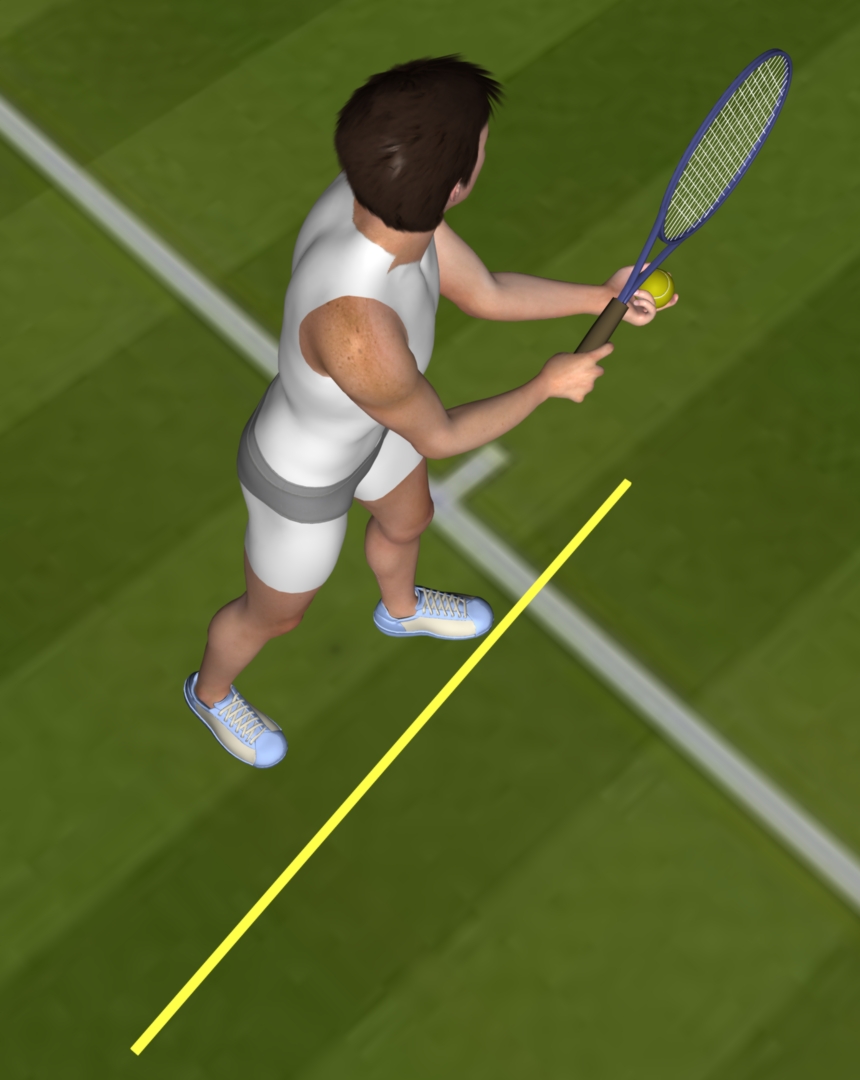Service footwork
It is worth remembering that, even on the serve, you hit the ball with your feet. That is always true of every stroke since the momentum you inject into the ball must first be "stolen" from the earth using your feet. It is especially true of the serve since a consistent serve depends on a consistent toss, and a consistent toss depends on balance. That the toss requires that you be on balance is pretty easy to understand. If you are off balance even a little bit as you bring your arms up, your brain will be working overtime to keep you from falling on your face - all while you are trying to toss the ball into a space not much bigger than the ball itself. The best service motion in the world is useless if the ball is in a different place every time you try to hit it. A 125 mph serve that commonly buries itself into the center of the net or the back fence is of no use to anyone but your opponent.
To that end the first place to look at if you want to improve your serve is your footwork. The key to staying in perfect balance while waving your arms about trying to hit a serve is always to achieve and maintain dynamic balance. When you are in dynamic balance, you regulate and fine-tune your body's attitude solely by tensing and relaxing your quadriceps muscles. Contrast this with static balance where to maintains an upright position you must constantly be adjusting your center of gravity necessitating gyrations of the upper body which, of course, interfere with concurrent fine motor actions such as tossing the ball.

Starting Position
It is, therefore, essential that one is in dynamic balance before the throwing arm reaches the shoulder level during the toss. The requirement of dynamic balance is why the service usually starts with a rocking motion transferring bodyweight, say, from the front foot to the back foot then to the front again. There are variations on this theme among the pros which have made it difficult to identify what constitutes "correct" footwork on the serve, but the bottom line is that you must initiate some weight shuffling before the ball is released to establish dynamic balance. That balance must then be maintained throughout the stroke often by converting the earthbound static balance to free flight (jumping), which is yet another form of dynamic balance.
Great footwork on the serve starts with how one lines up to hit the ball. Initial foot placement varies from the deuce court to the ad court, but the basic orientation of the feet is around the line of intended direction of the ball (the "line-of-flight" or flight line). The front foot is always just behind the baseline oriented anywhere from parallel to perpendicular to the flight line. The placement of the back foot is flexible. Regarding the distance of the rear foot from the flight line today's pros tend to use a semi-closed stance with the toe of the back foot about 12-18 inches behind the front foot more towards the back fence than the side fence. There have been those (like John McEnroe) who put the back foot WAY behind the front foot - basically both feet just behind the baseline. In the golden, olden days, pros put their toes of both feet on the flight line, but then they were proscribed from jumping during the service motion (doubtless a failed plot by the freakishly tall to maintain their natural advantage over the rest of us). Nowadays, the permission to grab some air on the serve make it possible to start the serve in a closed stance. However, many top pros use something resembling the classic, slightly closed stance. An open stance on the serve, with the back foot on or over the flight line, is right out! That is for beginners, and it makes tossing the ball difficult and hitting with authority impossible. Notwithstanding that prohibition, you are free to select whatever back foot position results in the most consistent toss and makes you feel least like a pretzel.
